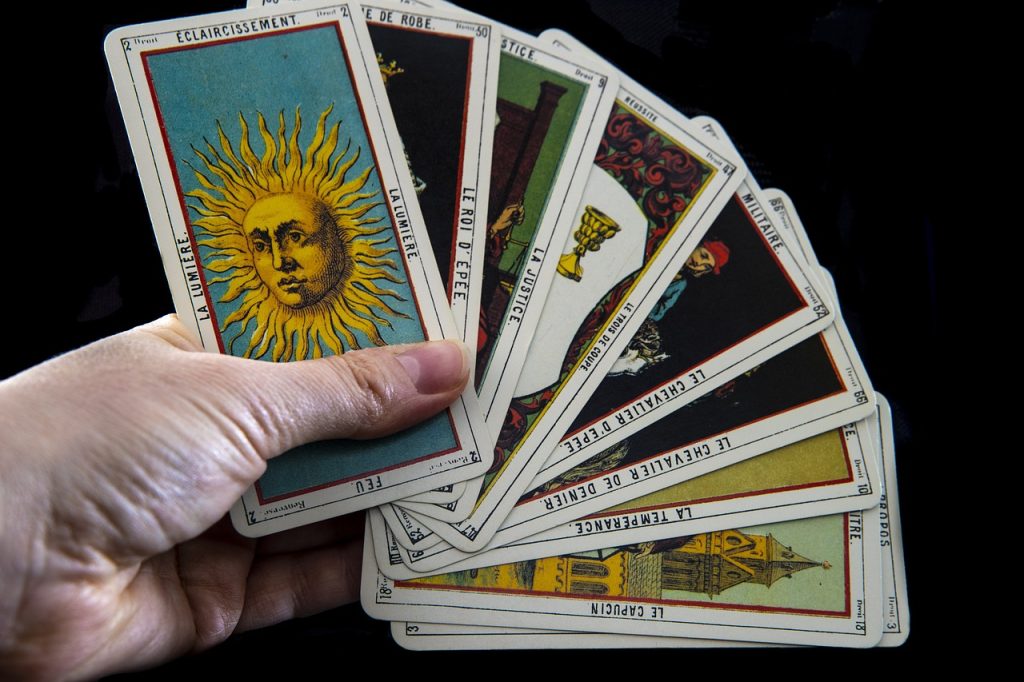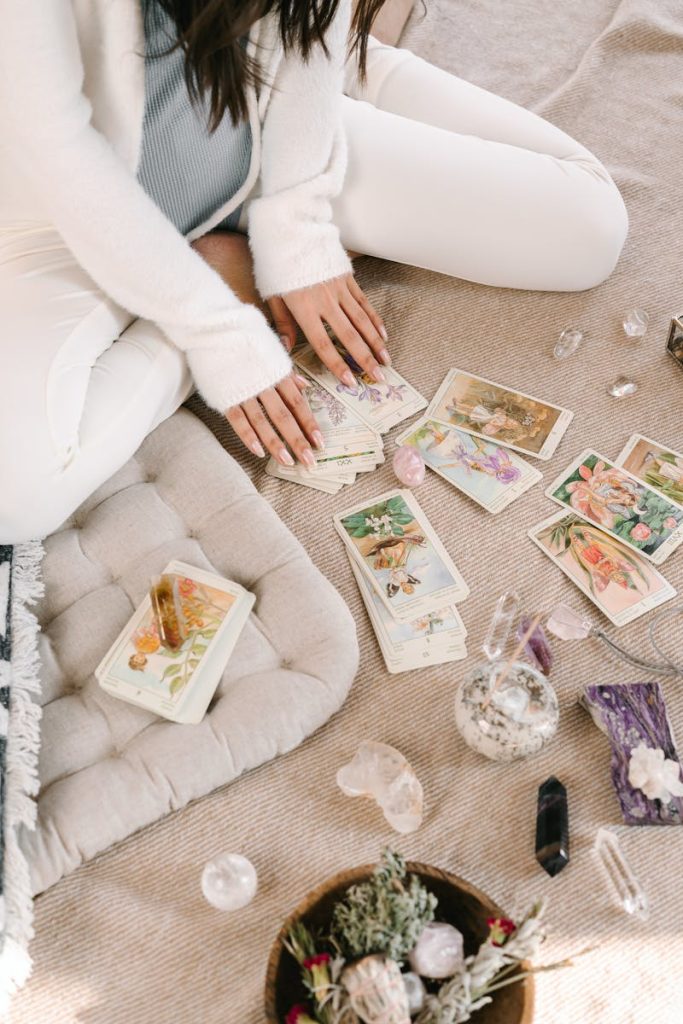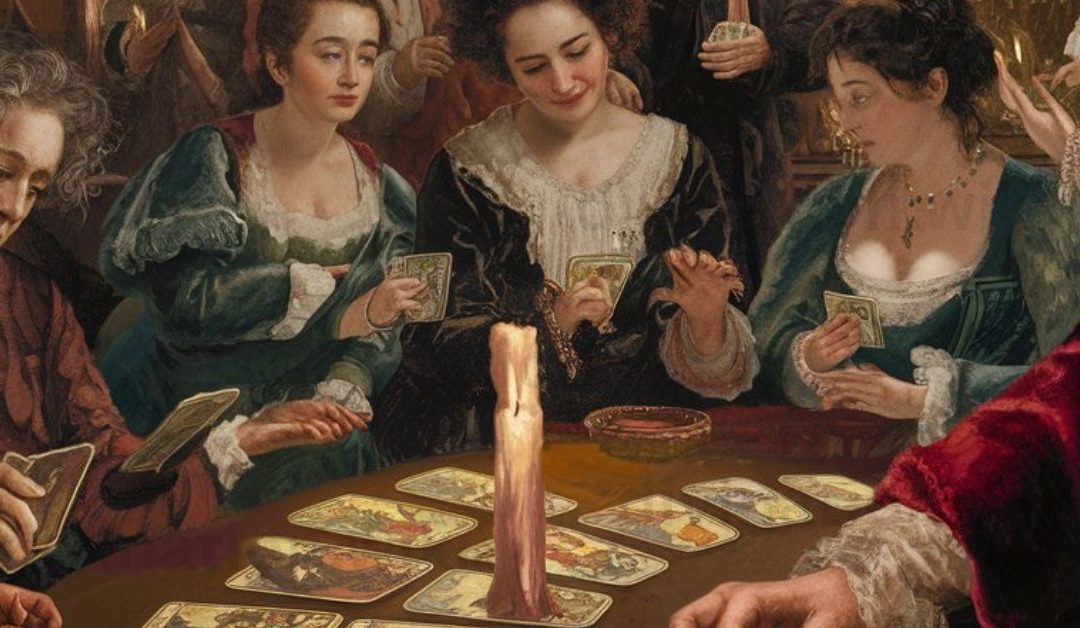Tarot cards have a rich and fascinating history that spans centuries, captivating the minds and hearts of individuals seeking spiritual guidance and insight. Originating in the 15th century, these mystical cards have evolved from their humble beginnings as a simple deck of playing cards to become powerful tools for divination and self-reflection. Throughout the years, tarot cards have become intertwined with various cultural and artistic movements, leaving an indelible mark on human history. Delve into the captivating world of tarot cards as we explore their intriguing origins, their symbolic meanings, and their enduring significance in the realm of spirituality and personal growth.
Ancient Origins of Tarot Cards
Tarot cards have a rich and fascinating history that traces back thousands of years. To truly understand the roots of tarot cards, it is important to explore the origin of playing cards themselves. The concept of playing cards originated in ancient China during the Tang Dynasty. These early cards were predominantly used for gambling and had suits resembling the four seasons.
Egyptian Influence on Playing Cards
Although playing cards were introduced in China, they reached Europe through the Middle East. It is believed that the Egyptians were the first to adopt and modify these cards. The Egyptian influence on playing cards can be seen in the inclusion of iconic figures such as pharaohs and gods, which added a mystical aspect to the cards.
Introduction of Tarot Cards
The emergence of tarot cards as we know them today can be traced back to the 15th century in Europe. The first known tarot deck, known as the Visconti-Sforza Tarot, was created in Italy during the Renaissance era. These early tarot decks were primarily used as playing cards for noble families and were adorned with lavish illustrations.
The Visconti-Sforza Tarot – A Detailed Exploration
Origins and Historical Context
The Visconti-Sforza Tarot is one of the oldest and most revered tarot decks, originating in the mid-15th century during the Italian Renaissance. It was commissioned by the Visconti and Sforza families, two powerful noble houses in Milan. This deck is attributed to the work of multiple artists, including Bonifacio Bembo, who was celebrated for his intricate and elaborate painting style. The primary purpose of the deck was for the card game “tarocchi,” popular among the aristocracy for entertainment and education, rather than for divination.
Deck Composition and Design
Major Arcana
The Visconti-Sforza Tarot comprises 78 cards, including the Major Arcana, which consists of 22 cards. These cards, such as The Fool, The Magician, The High Priestess, and The World, represent significant life events and universal archetypes. They are characterized by detailed artwork and rich symbolism, reflecting themes of spirituality, morality, and human experience.
Minor Arcana
In addition to the Major Arcana, the deck includes the Minor Arcana, made up of 56 cards divided into four suits: Swords, Cups, Coins, and Batons. Each suit contains 10 numbered cards and four court cards (King, Queen, Knight, and Page). These cards depict various aspects of medieval life, offering a glimpse into the social and cultural norms of the time.
Artistic Style
The cards are noted for their elaborate designs and use of gold leaf, which was typical of Renaissance art. Figures are adorned in contemporary clothing, and the backgrounds feature intricate patterns and symbols. This opulent style reflects the wealth and sophistication of the Milanese court.
Symbolism and Interpretation
Rich Symbolic Imagery
The Visconti-Sforza Tarot is renowned for its rich tapestry of symbolic imagery. Each card is a mosaic of allegorical figures, mythological themes, and philosophical concepts. For example, The Star card features a young woman pouring water from two pitchers, symbolizing hope and guidance, while The Moon card shows a serene night scene, suggesting mystery and intuition.
Influence of Renaissance Humanism
The deck reflects the Renaissance’s focus on humanism, emphasizing individual characters and moral lessons. It incorporates elements of Christian iconography and classical mythology, illustrating the period’s blend of religious and secular thought. This makes the deck a valuable tool for contemplation and self-reflection.
Historical Discoveries and Preservation
Surviving Decks
Only a few original Visconti-Sforza decks have survived to the present day, and they are incomplete. Notable collections are housed in the Morgan Library & Museum in New York, the Accademia Carrara in Bergamo, and the Biblioteca Nazionale in Turin. These collections are precious remnants of Renaissance culture and artistry.
Restoration and Reproduction
Given the historical significance of the Visconti-Sforza Tarot, there have been numerous efforts to restore and reproduce the deck. Modern reproductions aim to capture the original beauty and detail of the cards, making them accessible to contemporary enthusiasts and scholars.
Legacy and Influence
Impact on Tarot Tradition
The Visconti-Sforza Tarot has had a lasting impact on the development of tarot as a tool for divination and self-exploration. Its structure and symbolism have influenced many subsequent tarot decks, including the well-known Rider-Waite deck. The deck’s design and themes continue to inspire tarot practitioners and artists alike.
Cultural Heritage
As a masterpiece of Renaissance art and a significant artifact in tarot history, the Visconti-Sforza Tarot offers valuable insights into the cultural, artistic, and social dynamics of 15th-century Italy. It remains a subject of fascination and study, appreciated for its exquisite craftsmanship and historical context.
Continuing Fascination
The Visconti-Sforza Tarot captivates scholars, artists, and tarot enthusiasts worldwide. Its intricate designs and rich symbolism provide a profound connection to the intellectual and artistic heritage of the Renaissance. Whether viewed as a work of art or a mystical tool, the deck continues to be an enduring symbol of Renaissance culture.
The Visconti-Sforza Tarot stands as a remarkable example of Renaissance artistry and a key piece of tarot history. Its intricate design, profound symbolism, and historical context make it a valuable cultural artifact. The deck not only offers a window into the past but also serves as a bridge between the mundane and the mystical, providing timeless wisdom and insight for those who seek its counsel. The legacy of the Visconti-Sforza Tarot remains unbroken, reflecting the enduring spirit of the Renaissance and its contributions to art, culture, and spirituality.
Tarot Cards in the Middle Ages
Tarot Cards as Playing Cards
During the Middle Ages, tarot cards continued to be primarily used as playing cards. However, the symbolism and imagery of the cards began to evolve, incorporating elements from various esoteric traditions. The vibrant and detailed illustrations featured on the cards captivated the imaginations of players and laid the foundation for the tarot’s mystical reputation.
Tarot Cards in European Nobility
Tarot cards gained popularity among European nobility during the Middle Ages, particularly in Italy and France. The cards were seen as a form of entertainment and were often used to play intricate card games at court. The aristocracy’s fascination with tarot cards added an air of sophistication to the practice, further fueling its widespread adoption.
Tarot Cards in Fortune-Telling
While tarot cards were initially used primarily for playing games, their association with mysticism and divination began to emerge during the Middle Ages. Fortune-telling with tarot cards became a popular practice, with individuals seeking guidance and insight into their futures. This newfound role as a divination tool propelled tarot cards into the realm of the mystical and cemented their association with fortune-telling.

Development of Tarot Card Symbolism
Major Arcana
One of the defining features of tarot cards is the presence of the Major Arcana. This subset of the tarot deck consists of 22 cards, each representing a unique archetype or significant life event. The Major Arcana cards are rich in symbolism and are believed to hold immense spiritual and psychological significance. From The Fool to The World, each card tells a story and imparts valuable wisdom to those who explore their meanings.
Minor Arcana
In addition to the Major Arcana, tarot decks also feature the Minor Arcana. This subset comprises four suits – Cups, Swords, Wands, and Pentacles – each representing different aspects of life. The Minor Arcana cards delve into the everyday experiences and challenges faced by individuals and provide insights into relationships, emotions, conflicts, and material concerns. While the Major Arcana focuses on the grand themes of life, the Minor Arcana offers guidance on a more personal level.
Symbolic Meanings and Interpretations
The symbolism found within tarot cards is a cornerstone of the practice of tarot reading. Each card is infused with symbolism and hidden meanings that are open to interpretation. The rich tapestry of symbols within tarot cards can be explored through various systems, such as numerology, astrology, and elemental associations. Tarot readers study these symbolisms to unlock the deeper layers of understanding and provide insightful interpretations for those seeking guidance.
Tarot Card Spreads and Reading Techniques
Different Tarot Card Spreads
Tarot card spreads are the specific arrangements of cards used during a reading. There are numerous spreads that cater to different inquiries and situations. From simple three-card spreads to complex spreads like the Celtic Cross, each layout provides a unique framework for the interpretation of the cards. The choice of spread depends on the reader’s preferences and the specific question or area of focus.
Traditional Reading Techniques
Traditional tarot card reading techniques have been passed down through generations of practitioners. These techniques involve rituals, specific card placements, and established interpretations based on the positions of the cards in the spread. Traditional reading techniques emphasize structure and adherence to established meanings to provide accurate and reliable readings.
Intuitive Reading Approaches
While traditional techniques provide a solid foundation, many tarot readers also rely on their intuition and personal connection with the cards. Intuitive reading approaches allow the reader to tap into their innate wisdom and psychic abilities to interpret the cards. This approach encourages the reader to trust their inner guidance and establish a unique connection with the querent, resulting in highly personalized and insightful readings.

The Influence of Occult Movements
Tarot Cards in Occult Societies
The late 18th and 19th centuries witnessed a surge in interest in the occult, with secret societies and organizations incorporating tarot cards into their practices. The tarot became intertwined with mystical teachings and the esoteric philosophies of groups such as the Hermetic Order of the Golden Dawn and the Theosophical Society. Tarot cards became tools for spiritual development, divination, and accessing hidden knowledge.
Tarot Symbolism in Hermetic Qabalah
The Hermetic Qabalah, a mystical system derived from Jewish mysticism, played a significant role in shaping the symbolic interpretation of tarot cards. The intricate web of correspondences within the Qabalah provided a framework for understanding the deeper layers of meaning within the tarot. The integration of Qabalistic teachings with tarot symbolism deepened the esoteric significance of the cards and influenced their interpretations.
Theosophical Society and Tarot
In the late 19th century, the Theosophical Society, founded by Helena Blavatsky, brought attention to ancient wisdom traditions and esoteric practices from around the world. Tarot cards were embraced by the Theosophical Society as a means of spiritual exploration and self-discovery. The society’s promotion of tarot as a tool for personal growth contributed to its continued popularity and exploration in the years to come.

Modern Tarot Card Usage
Tarot Cards in Popular Culture
In the 20th century, tarot cards gained increasing recognition and popularity in popular culture. They appeared in art, literature, and music, capturing the imagination of the masses. From Surrealists like Salvador Dali to rock bands like Led Zeppelin, tarot cards inspired countless artists, lending their imagery and symbolism to a broader audience.
Psychological and Spiritual Applications
In addition to their cultural impact, tarot cards found a place within psychological and spiritual practices. Psychologists and therapists began incorporating tarot cards into their therapeutic sessions, using them as tools for self-reflection and exploration. The archetypal themes and symbols within the cards provided a rich language for introspection and personal growth.
Contemporary Tarot Deck Variations
As interest in tarot continues to grow, a diverse array of contemporary tarot decks has emerged. These decks often feature innovative themes and artistic styles, reflecting modern sensibilities and cultural influences. From decks inspired by mythology to those embracing pop culture, contemporary tarot variations offer fresh perspectives while maintaining the core structure and symbolism of traditional tarot. This diversity allows individuals to connect with the tarot in ways that resonate with their unique experiences and worldviews.
The Enduring Legacy of Tarot Cards
The history and evolution of tarot cards are a testament to their enduring significance and adaptability. From their ancient origins as simple playing cards to their current status as powerful tools for spiritual insight, tarot cards have continually evolved to meet the needs of those seeking guidance and self-discovery. As we continue to explore and reinterpret the rich symbolism and meanings embedded in the cards, the tarot’s legacy as a bridge between the mundane and the mystical remains unbroken, offering timeless wisdom to those who seek its counsel.
© 2024 by Divination Wiki Reserved all rights. This document cannot be copied or communicated in any way without Divination Wiki’s prior written consent, whether it be electronically, mechanically, through photocopying, recording, or another medium.
